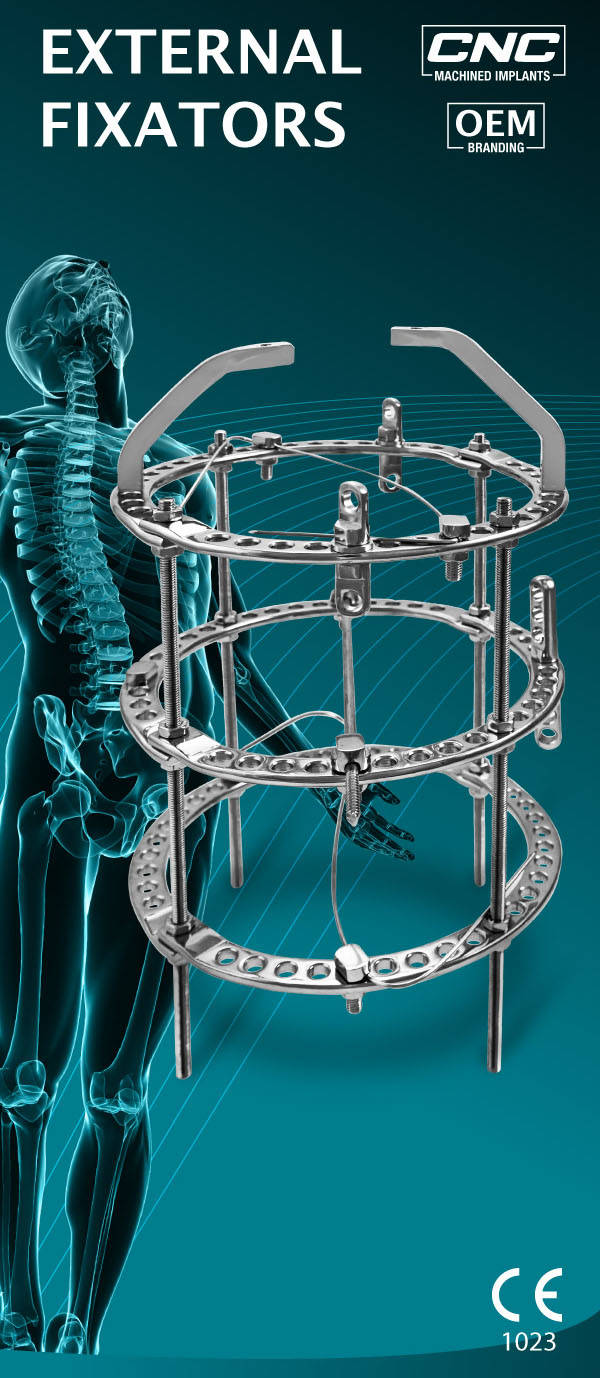External fixators are used for treating the external bone injuries and fixing the bones in place. This type of fixation is used to stabilize bone. The surgery also stabilizes soft tissues. In external fixation process, the surgeon inserts pins through the skin. The pins are inserted into the bone where it is held tightly by an external frame. As a patient you should select an external fixators device carefully after considering its varied aspects.
The surgery procedure
External fixator is thus a frame that stabilizes the broken bones firmly at a proper place and position. The surgeon makes small incisions into the skin and muscle and then inserts metal pins or screws. The surgeon attaches the pins and screws to a bar outside of the skin. To secure the bone in place, the surgeon may use metal screws, rods, pins, or plates.
But first, the surgeon digs holes into a skin area that is free of injury. This skin area should be around the injured bones. Then, wires or special bolts are inserted into the hole. These bolts are then jointed outside the body using a rod or a curved metal piece. Special ball-and-socket joints are also used for supporting the frame. The surgeon makes sure that the bolts that pierce the skin are properly cleaned.
The external fixator procedure is performed under general anesthesia in an operating room. When removing the external frame, there is generally no need for anesthesia when the patient visits the surgeon again.
When to use external fixators
Typically, external fixation is used to treat open fractures. The surgeon may also opt for these fixators as a temporary solution. However, that is not the only use.
When there is a case for limb lengthening, external fixators India are often seen as a solution. People having short limbs can go for this treatment. For instance, those who want to lengthen their legs can find solution in this treatment. Many people have their thigh bone [femur] cut diagonally in a surgical operation. They also can lengthen such thighs. The surgery also is useful for reshaping of bones.
Under the procedure for lengthening of the limbs, the surgeon places external fixator pins or wires on each side of the limb. Then the external metal apparatus is used for pushing the two bones apart very slowly in millimeter each day.
In fact, there are plenty of uses of external fixators. We can say that the surgery procedure is highly useful in many bone fracture or bone reshaping cases. Here are some of them.
- Stabilization of open fractures
- Correction of misalignment of bones
- Correction of length discrepancies
- Stabilization of soft tissue
- Pelvic ring disruptions
- Pediatric fractures
- Open fracture having sever soft tissue disruption
- Unstable fractures
- Limb lengthening
- Infection or nonunion related fractured
Healing time
A patient may have to keep an external fixator in place for many weeks, and if necessary, for many months. However, most fractures take only 6 to 12 weeks to heal. It is the complicated fractures that take many months before healing completely.
In many cases, it has been seen that while walking, if weight is put through structure with the added support, the healing process actually quickens.


Leave A Comment